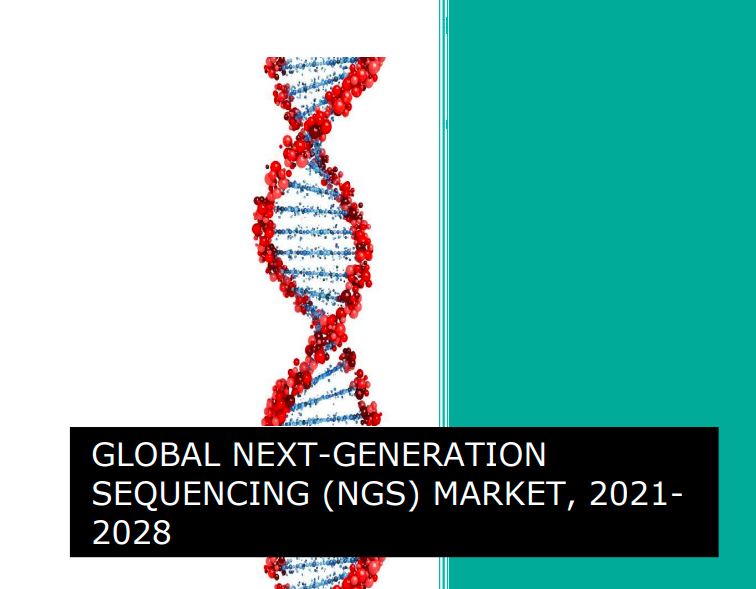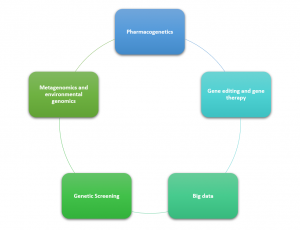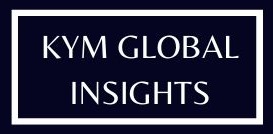
GLOBAL NEXT-GENERATION SEQUENCING (NGS) MARKET
MARKET ANALYSIS & SEGMENT FORECAST FROM 2021 TO 2028Global Next Generation Sequencing Market Size, Share & Trends Analysis Report By Sequencing (Whole Genome, Targeted Resequencing, Whole Exome, RNA, CHIP, DE Novo, Methyl), By Technology (Sequencing By Synthesis, ION Semiconductor, SMRT, Nanopore, Others), By Product (Reagents and Consumables, Software and Services), By Applications (Drug discovery and Personalized Medicine, Diagnostics and Genetic Screening, Agriculture and Animal Research, Others), By End-User (Academic institutes and Research Centre, Hospitals and Clinics, Pharma and Bio-Technology Companies, Others), By Region And Segment Forecasts, 2021 - 2028
Published Date: Aug 2021
Base Year for Estimate: 2020
Report ID: KYMGLHC02
Format: Electronic (PDF)
Number of Pages: 176
Price: USD 5000
Market Outlook
Market Size & Forecast
Segment Analysis
Market Drivers & Restraints
Emerging Trends Analysis
Competitive Landscape & Company Profiles
KOL Commentary (Primary Research)
Session With Analyst
The report covers the following major segments of the Next-Generation Sequencing market:
- By Sequencing: Whole Genome Sequencing, Targeted Resequencing, Whole Exome Sequencing, RNA Sequencing, CHIP Sequencing, De Novo Sequencing, and Methyl Sequencing
- By Technology: Sequencing by Synthesis, Ion Semiconductor Sequencing, Single-Molecule Real-Time Sequencing, Nanopore Sequencing, and Others (Polony sequencing, pyrosequencing, DNA nano ball sequencing, and true Single Molecule Sequencing (tSMS)
- By Products: Instruments, Reagents and Consumables, and Software and Services
- By Applications: Drug Discovery and Personalized Medicine, Genetic Screening, Diagnostics, Agriculture and Animal Research, and Others
- By End-Use: Academic Institutes and Research Centre, Hospitals and Clinics, Pharmaceutical and Biotechnology Companies, and Others
- By Region: North America, Europe, Asia-Pacific, South America, and META
Regional Scope
The report covers five regions including North America, Europe, Asia-Pacific, South America, and ME&A. Each region is segregated by countries, which include North America (USA, Canada, Mexico), Europe (UK, Germany, France, Spain, Italy, and Rest of Europe), Asia-Pacific (India, China, Japan, and the Rest of Asia-Pacific), South America (Brazil, Rest of South America), ME&A (the Middle East and Africa). These are the countries throughout the world where the robust growth of next-generation sequencing market adoption was observed in the past and is expected to register growth during the forecast period due to the increasing adoption of advanced infrastructures and rising demand for sequencing in almost all the healthcare sectors. Also, key drivers of all the countries are included in the report which indicates the favorable opportunities for companies to enter these markets.
Estimates and Forecast Analysis
- The report covers market estimations and projections of Global Next-Generation Sequencing for the following years:
- Base year: 2020
- Projected years: 2021-2028
- The key industry dynamics, major technological trends, and application markets have been evaluated to understand their impact on demand for the forecast period. The growth rates were estimated using correlation, regression, and time-series analysis
- We have used the bottom-up approach for market sizing, analyzing key regional markets, dynamics, and trends for various products, sequences, and end-uses. The global market has been estimated by integrating the regional and application markets
- All market estimates and forecasts have been validated through primary interviews with the key industry participants
- Inflation has not been accounted for to estimate and forecast the market
- Numbers may not add up due to rounding off
Global Next-Generation Sequencing Market – Key Industry Insights
- The global market for Next-Generation Sequencing is growing with revenue of USD 8,767.9 Million in 2020, and it is expected to witness a CAGR of 17.2% during the period 2021-2028.
- Among the various application, the diagnostics and genetic screening segment held the largest share of XX%, with a value of USD XX Million in 2020 and it is expected to grow with a CAGR of XX% to reach USD XX Million in 2028.
- Out of end-users, the academic institutes and research center segment held the largest share of XX%, with a value of USD XX Million in 2020 and it is expected to grow with a CAGR of XX% to reach USD XX Million in 2028.
- Among the sequencing methods, the targeted resequencing segment held the largest share of XX%, with a value of USD XX Million in 2020 and it is expected to grow with a CAGR of XX% to reach USD XX Million in 2028.
- Among the various technologies, the sequencing by synthesis segment held the largest share of XX%, with a value of USD XX Million in 2020 and it is expected to grow with a CAGR of XX% to reach USD XX Million in 2028.
- Among the product types, the reagents and consumables segment held the largest share of XX%, with a value of USD XX Million in 2020 and it is expected to grow with a CAGR of XX% to reach USD XX Million in 2028.
- Among the five regions including North America, Europe, Asia-Pacific, South America, and ME&A, the North American market held the largest share of XX%, with the value at USD XX Million in 2020 and it is expected to grow with a CAGR of XX% to reach USD XX Million in 2028.
Global Next-Generation Sequencing Market – Key Market Developments

Global Next-Generation Sequencing Market – Drivers

- Decreasing costs for genetic sequencing with advancement in the field of genomics: As genomics continues to improve and associated costs decline, the use of next-genome sequencing has become more broadly adopted and integrated into daily clinical applications. According to the National Human Genome Research Institute (NHGRI), the cost of genomic sequencing has reduced to a significant amount from USD 95 million per genome in 2001 to USD 689 per genome in 2020, with the continuous expansion of research in human genetics and the increase in the number of clinical applications of genome sequencing. The cost of genetic sequencing started to fall after the introduction of the “second generation” (or “next-generation”) sequencing platform in 2008. Before next-generation, Sanger-based chemical reagents, and capillary-based instruments (“first generation” sequencing platforms) were used to generate DNA sequences. The change in the instruments provides rapid development of DNA sequencing technology in recent years.

Exponential advancements in science and technology are revolutionizing the ability to decode the human genome to understand disease risks and customize treatments. The improvements in diagnostic scanning and in-vitro testing help in providing more information regarding human anatomy and also provides precision medicine and evidence-based approaches in clinical trials and thus, reducing the cost of genome sequencing.
COVID-19 Impact Analysis
The year 2020 marked a watershed moment in both history and global health. The COVID-19 pandemic has brought attention to the dangers of lethal epidemic-prone diseases sweeping our globalized world. COVID-19 has resulted in incalculable tragedy, but it has also demonstrated how science may adapt when confronted with a big global emergency. Over the last decade, a technological revolution has brought various new capabilities for pandemic response. One of them is the development of vaccinations at breakneck speed. Another example is genomic sequencing.
The world was able to swiftly detect SARS-CoV-2 with the assistance of sequencing (Next-generation sequencing Technology) and realizing that when the genome sequencing process was taking into account the speed with which diagnostic tests and other reaction devices might be developed quickly. Consistent genome sequencing helps with the tracking of disease transmission, movement, and development.
Next Generation Sequencing (NGS) Market Segmentation
- Next Generation Sequencing (NGS) Market, By Offering
- Whole Genome Sequencing (WGS)
- Targeted Resequencing
- Whole Exome Sequencing (WES)
- RNA Sequencing
- CHIP Sequencing
- De Novo Sequencing
- Methyl Sequencing
- Next Generation Sequencing (NGS) Market, By Technology
- Sequencing By Synthesis (SBS)
- Ion Semiconductor Sequencing
- Single-Molecule Real-Time Sequencing (SMRT)
- Nanopore Sequencing
- Other Technologies
- Next Generation Sequencing (NGS) Market, By Product
- Reagents and Consumables
- Software and Services
- Next Generation Sequencing (NGS) Market, By Application
- Drug Discovery and Personalized Medicine
- Diagnostics and Genetic Screening
- Agriculture and Animal Research
- Others
- Next Generation Sequencing (NGS) Market, By End-User
- Academic Institutes and Research Center
- Hospitals and Clinics
- Pharmaceutical and Biotechnology Companies
- Others
- Next Generation Sequencing (NGS) Market, By Region
- North America
- USA
- Canada
- Mexico
- Asia-Pacific
- China
- India
- Japan
- Rest of Asia-Pacific
- Europe
- UK
- Germany
- France
- Spain
- Italy
- Rest of Europe
- South America
- Brazil
- Rest of South America
- ME&A
- Middle East
- Africa
- North America
Company Profiles
- ILLUMINA INC.
- THERMO FISHER SCIENTIFIC
- PERKINELMER
- F. HOFFMANN-LA ROCHE AG (ROCHE)
- PACIFIC BIOSCIENCES
- AGILENT TECHNOLOGIES
- 10X GENOMICS INC
- QIAGEN
| Report Attribute | Details |
| Market size value in 2020 | USD 8,767.9 Mn |
| Revenue forecast in 2028 | USD XX Mn |
| Growth rate | CAGR of 17.2% from 2021 to 2028 |
| Base year for estimation | 2020 |
| Forecast period | 2021-2028 |
| Quantitative units | Revenue in USD million and CAGR from 2021 to 2028 |
| Report coverage | Market Size by Region, Revenue Size, Company Profiles, KOL Commentary, SWOT, Porter’s Five Forces, Growth Factors, and Trends |
| Segments covered | By Sequencing, By Technology, By Products, By Application, By End-Use, By Region |
| Regional scope | Global-North America, South America, APAC, Europe, ME&A |
| Country scope | USA, Canada, Mexico, India, China, Japan, UK, Germany, France, Sweden, Brazil, Middle East, Turkey, Africa |
| Key companies profiled | Illumina Inc., Thermo Fisher Scientific, Perkinelmer, F. Hoffmann-La Roche AG (Roche), Pacific Biosciences, Agilent Technologies, 10x Genomics Inc, Qiagen |
Report Related Frequently Asked Questions?
Buy full detailed market research report to get full insights!
